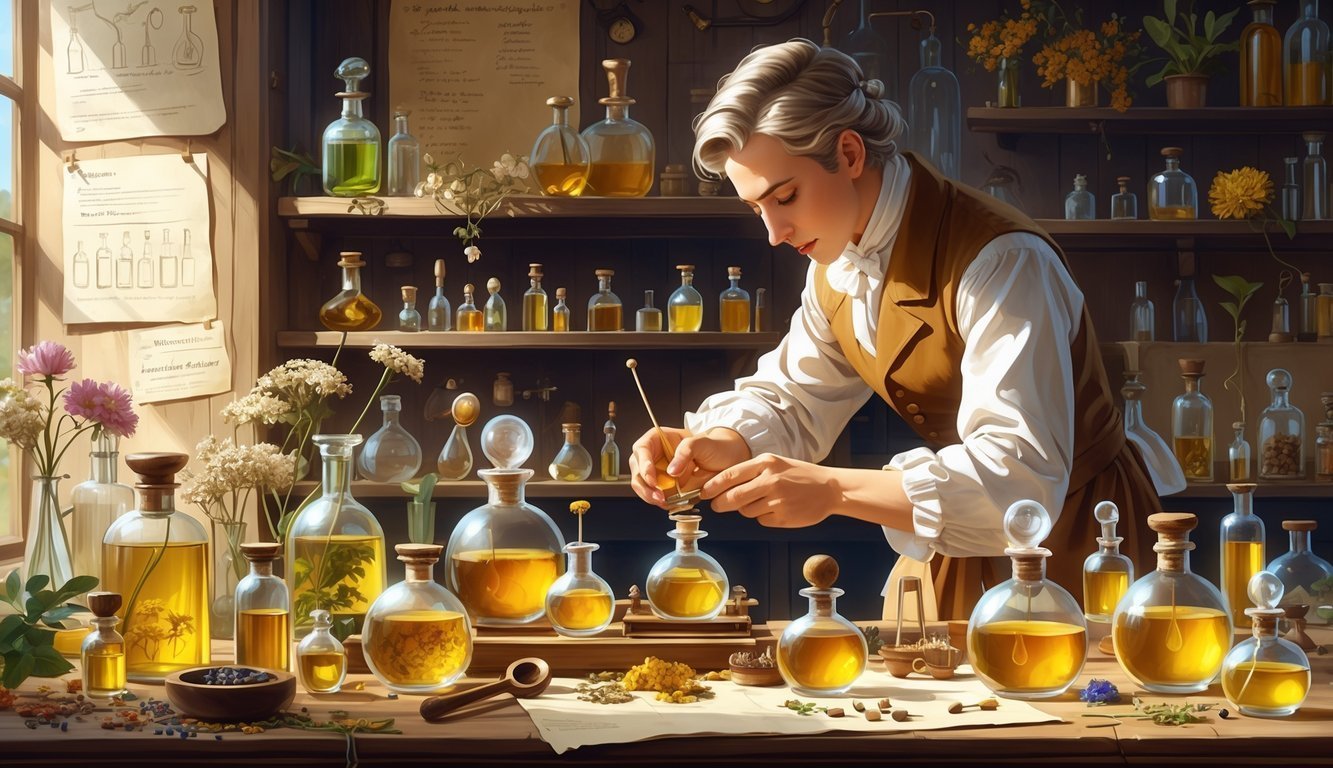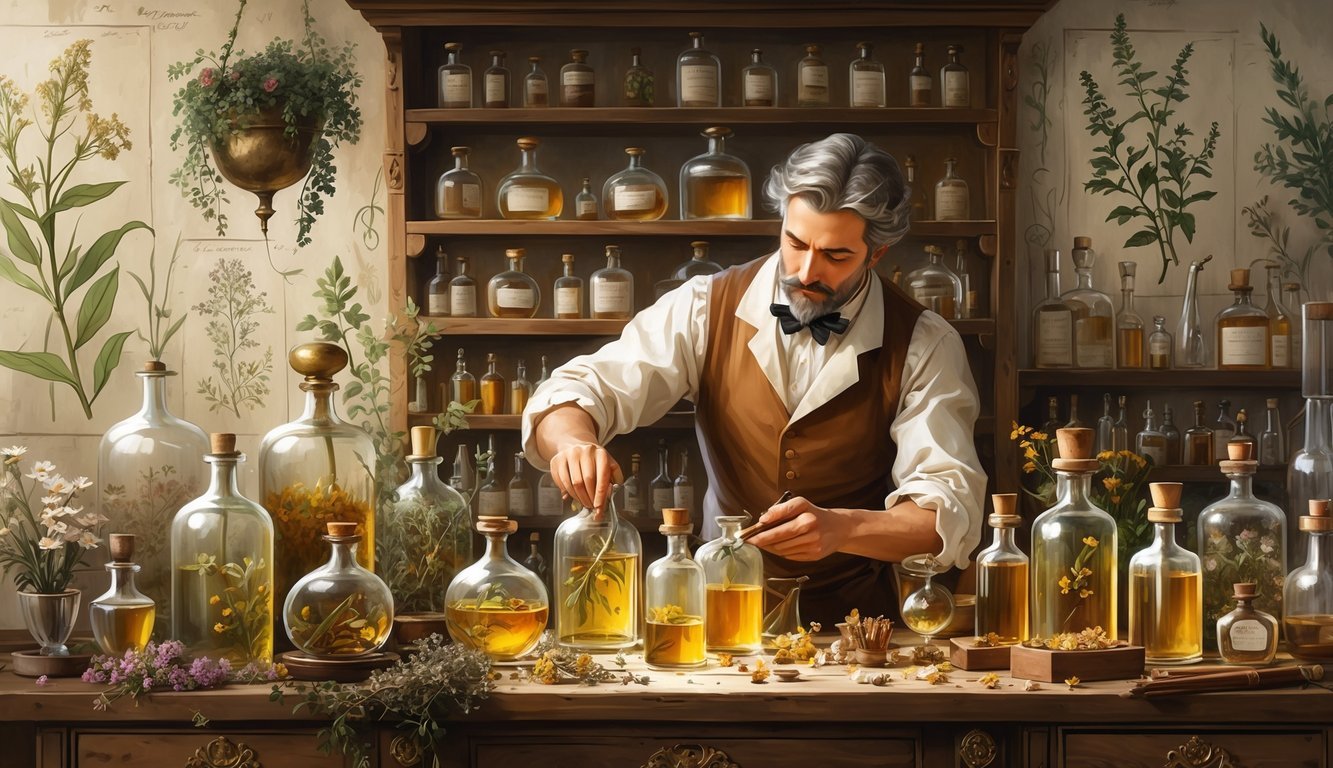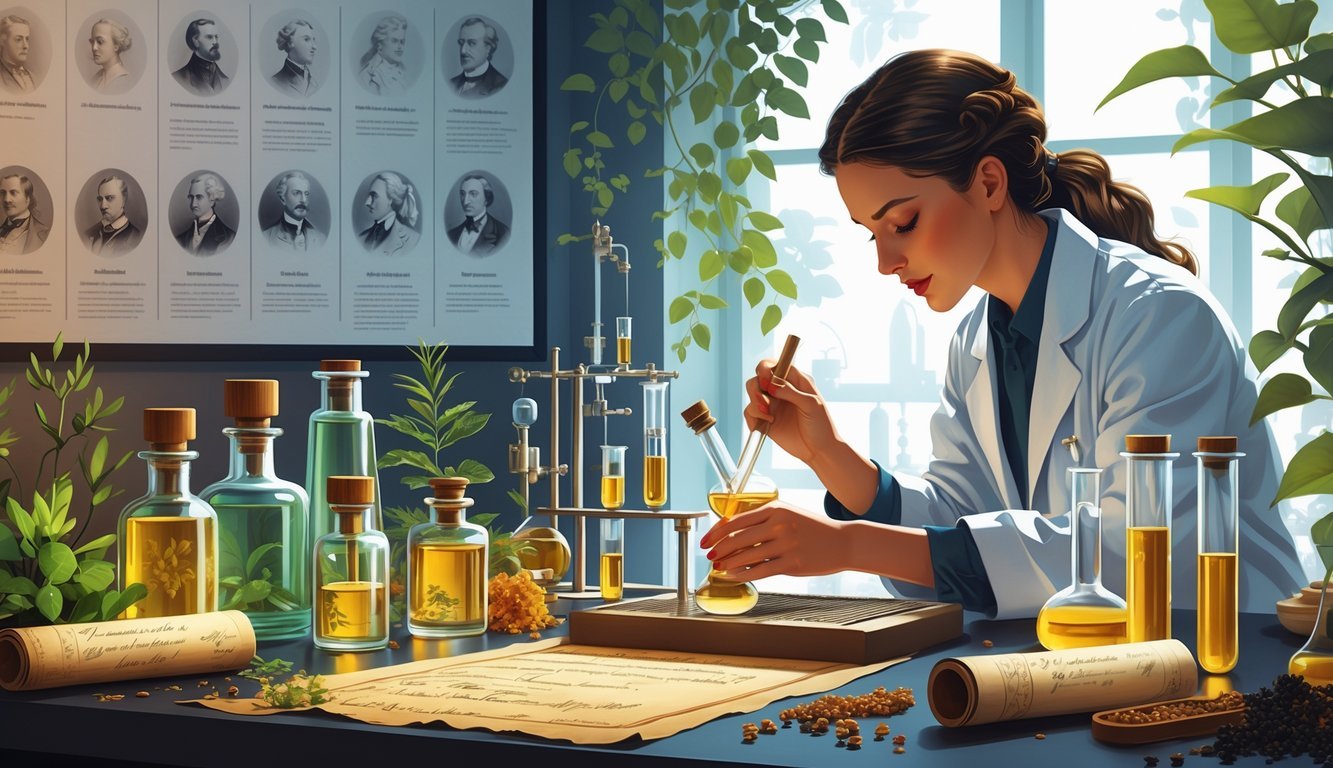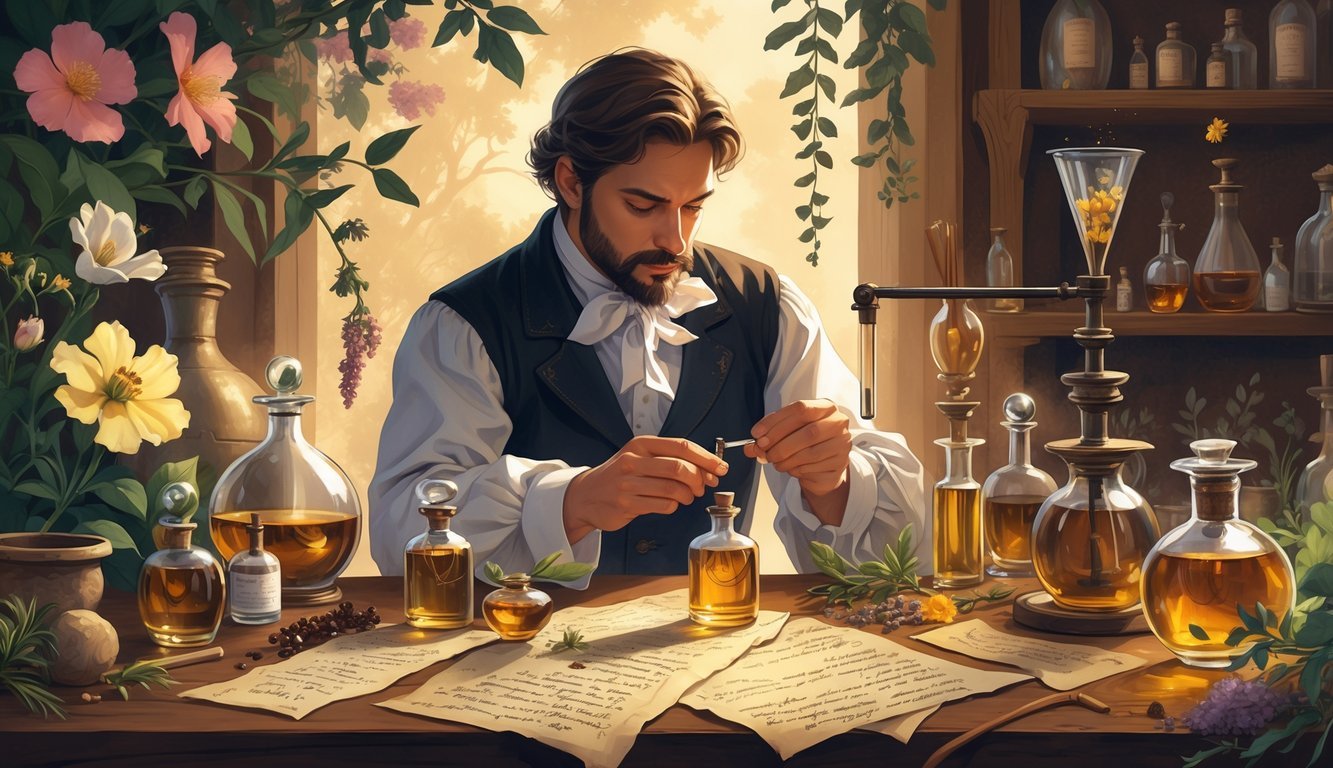PsychNewsDaily Publishers
100 Summit Drive
Burlington, MA, 01803
Telephone: (320) 349-2484
PsychNewsDaily Publishers
100 Summit Drive
Burlington, MA, 01803
Telephone: (320) 349-2484
Historical fragrances allow a sensory connection to the past, utilizing ancient recipes and natural ingredients to recreate scents that reflect cultural heritage and historical significance.

Reproducing historical fragrances lets you experience smells from long ago. It’s a direct connection with the past—kind of wild, honestly.
These scents bring history to life in a way that’s hard to describe. You end up understanding culture through your nose, not just your eyes or ears.
Experts dive into old texts and natural ingredients, then recreate these lost fragrances so you get a real sense of what people once smelled.
This process mixes science with art. You need to know ancient recipes and the plants or materials people used back then.
Sometimes, you have to track down the scent of extinct or super rare plants. That challenge makes every successful fragrance feel like a tiny time machine you can actually wear.
You’ll find these recreated perfumes in museums, on tours, or in specialty shops. They let you explore history with your nose, not just your eyes.
It’s a unique way to connect with the past—smell gets overlooked, but it’s powerful.

When you recreate historical perfumes, you get to connect with the past through scent. To do this, you need to find old recipes, figure out the key ingredients, and use careful methods to revive those fragrances.
Many old perfume recipes come from manuscripts, archaeological digs, or written descriptions. Usually, these recipes list raw materials like oils, resins, and plant extracts, but they’re often vague or incomplete.
You’ll see measurements based on weight or volume that don’t match today’s standards. Maybe a recipe says “a few drops” of ambergris or “a pinch” of musk. You have to guess and adjust to keep the scent balanced.
Some ingredients from the past are now banned or nearly impossible to find. So, you need to swap in modern, safe substitutes that get close to the original smell. That takes research and some trial and error.
Historical perfumes relied on natural elements like musk, ambergris, bergamot, lavender, violet, and cinnamon. These ingredients gave each era its own vibe.
For example:
The mix of these ingredients tells you a lot about what people liked and what they had access to. Knowing the popular scents of an era helps guide your perfume recreation.
To bring old scents back, you start by extracting oils from raw stuff with methods like cold pressing, steam distillation, or solvent extraction.
Then you follow the old recipe, but you have to adjust for modern safety and what’s actually available. Sometimes, you use synthetic versions of key ingredients to keep the smell stable—Victorian chemists did this too.
You need to balance the perfume’s layers: top notes (like bergamot), middle or heart notes (lavender, violet), and base notes (musk, ambergris). Blending these right makes the fragrance develop on your skin like it did for people long ago.
Testing and tweaking each batch is crucial. You want to get as close as you can to the historical scent people once wore.

Bringing ancient smells back to life means working with real objects found in museums and teaming up with today’s perfume companies. You’ve got to balance historical accuracy with modern rules and tools to get close to what people once smelled.
Museums keep old containers and materials that once held perfumes or scented stuff. These objects are clues to what everyday life smelled like in the past.
You can study residues or ingredients described in old texts to learn more about these scents. The Odeuropa project uses science to analyze remains from European museums.
It looks at tiny traces of ingredients like lily of the valley or rose to recreate ancient fragrances. Instead of just guessing, you get a clearer idea of the real smells and their role in history.
You need help from industry to recreate smells you can actually wear. Companies like Givaudan use modern perfume-making techniques to mix ingredients based on old recipes or chemical data.
But there are rules. The International Fragrance Association (IFRA) sets limits on what ingredients you can use. If something’s banned or unsafe, you can’t include it.
Still, with careful work, perfumers make versions you can enjoy that respect both history and today’s safety standards. You get to experience scents like Fougere Royale without worrying about harmful substances.

Curious about how old perfumes are brought back to life? It’s a mix of research, science, and a little bit of detective work.
You’ll see how experts find ingredients, where they get recipes, and what makes recreating these scents tricky. New technology helps, too, and there are some cool examples of successful reproductions out there.
You can recreate these perfumes by studying old texts, artwork, and even preserved bottles. Experts dig into the ingredients listed and how people made perfumes back then.
Historical records and trade documents often give clues about the materials used.
Scientists use chemical analysis like gas chromatography and mass spectrometry to break down the compounds in old perfume samples.
Natural remains, like residues on containers, can also help identify original ingredients.
Museums and perfume houses sometimes share old recipes in books or workshops. You’ll also find some formulas in online archives and historical documents.
Occasionally, perfume brands bring these recipes back as part of their collection.
Some ingredients from the past are rare, banned, or gone now, so getting an exact match is tough.
You also have to think about how people’s sense of smell changes over time and tweak the formulas to fit.
Advanced chemical tools let you spot tiny traces of molecules that were impossible to find before.
Computer modeling helps recreate perfume blends and predicts how different ingredients will mix.
Museums and fragrance specialists have actually recreated some ancient Roman perfumes. Early Islamic scents have also made a comeback thanks to their efforts.
Maison D’Orsay, for example, brings old formulas back to life for today’s customers. It’s pretty fascinating to see how these brands adapt historical aromas for modern tastes.